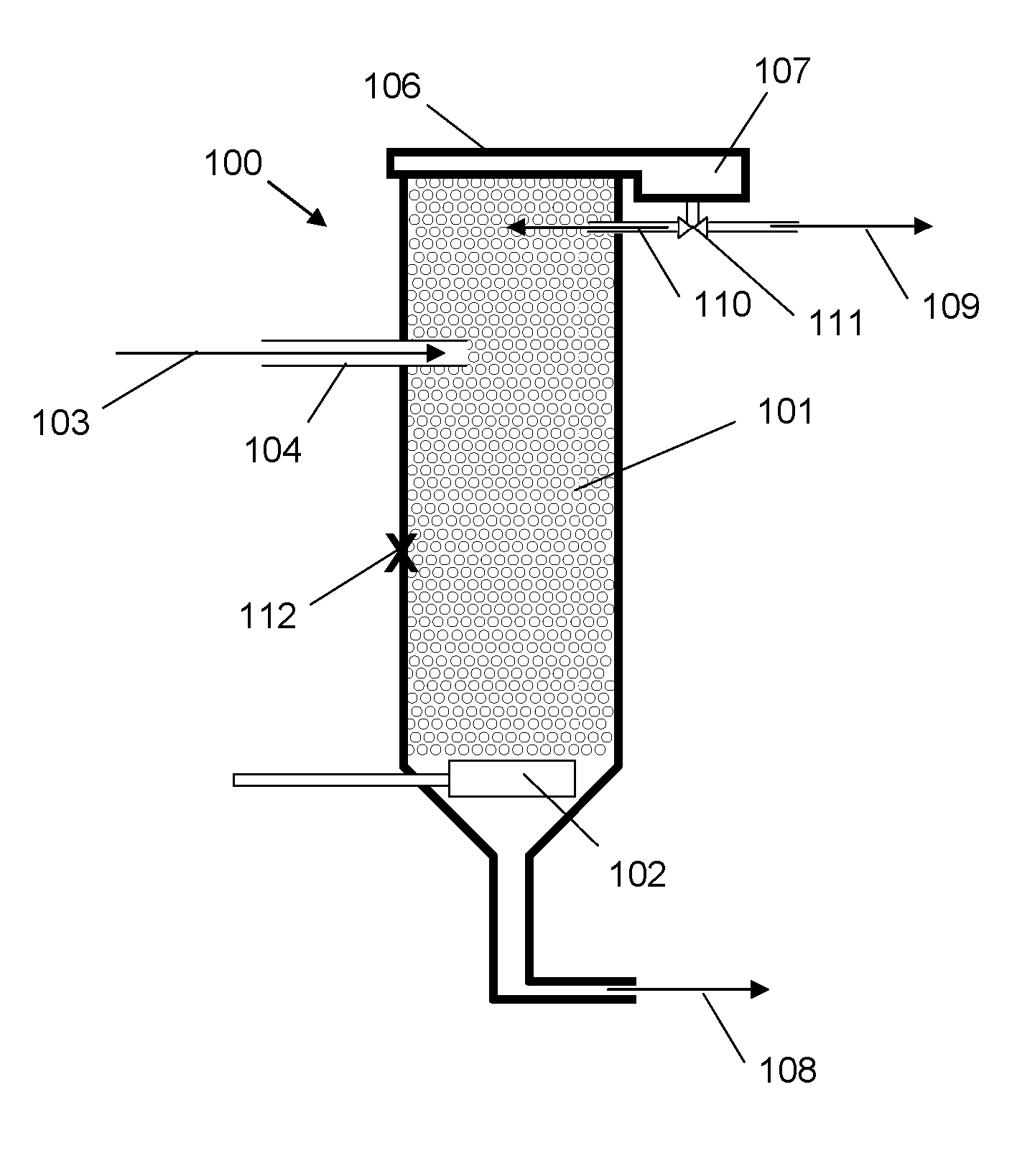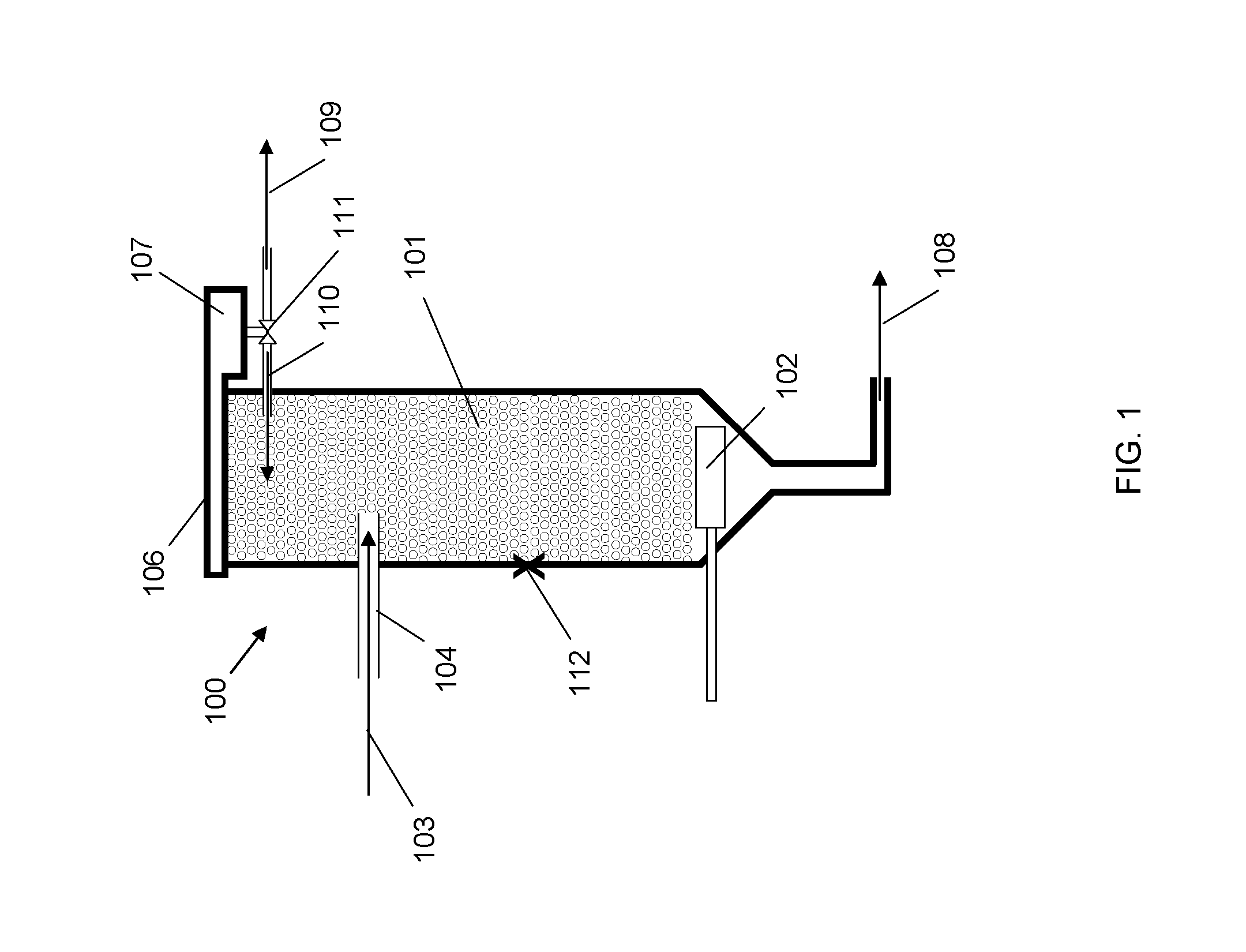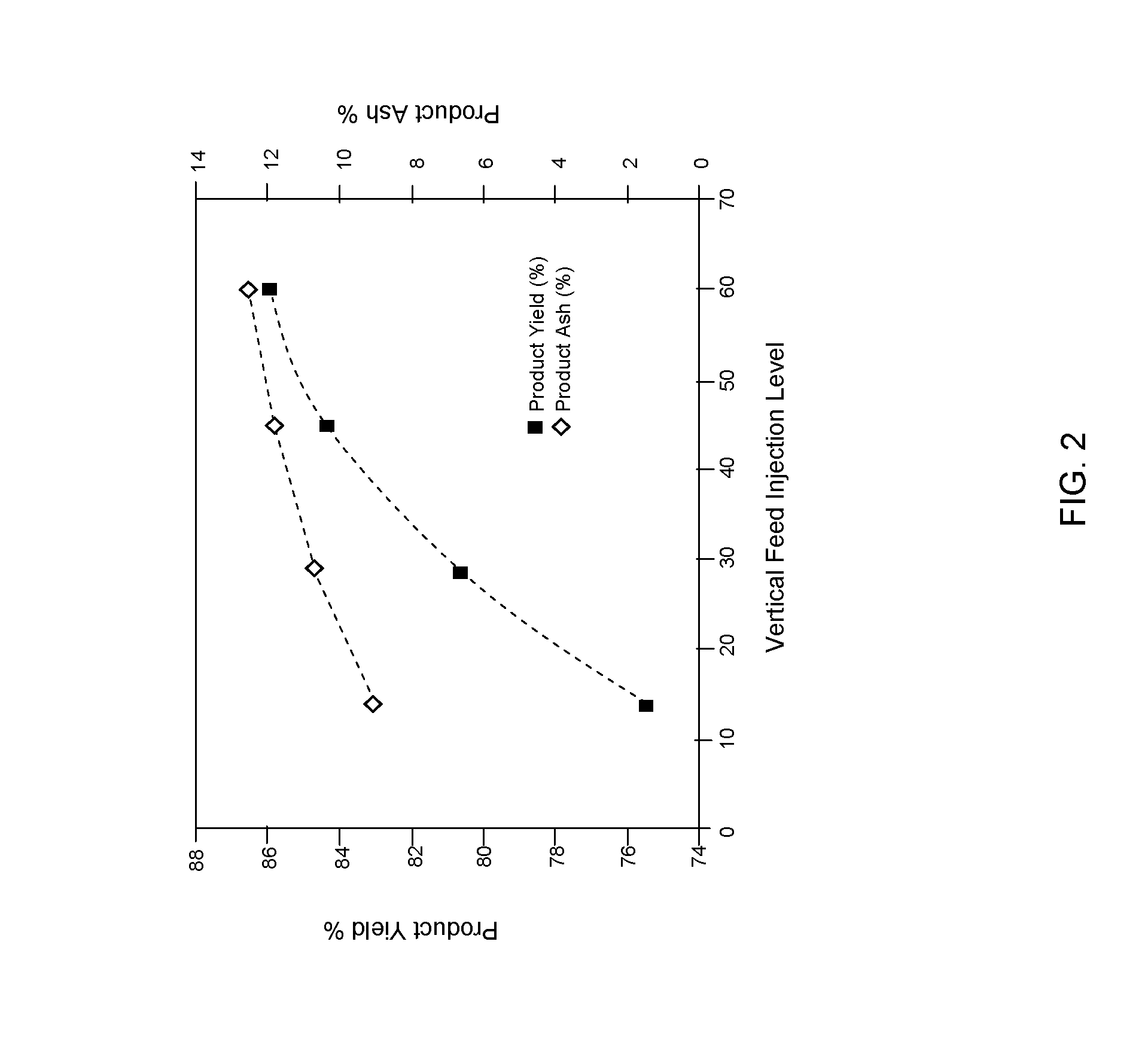[0020]A feed stream comprised of particles of varying hydrophobicity is injected directly into the froth zone of a vertical flotation column. The injection of the feed stream into the froth zone results in the creation of bubble-particle attachments between a plurality of bubbles in the froth zone and the hydrophobic particles. Injection into the froth zone offers significant
advantage because the interfacial bubble area per
unit volume in the froth is very high, collision path lengths are short, and turbulence is low, leading to significantly higher particle collection rates. Additionally, the particles may adhere to several bubbles, making the method particularly effective for coarse particles, and
recovery of smaller fines is increased as the fines become less likely to sweep around a bubble's streamlines in the more densely packed froth. This allows significantly higher feed rates for a given
recovery and grade of concentrate stream as compared to a column relying on
particle capture in a liquid collection zone, and
elimination of the liquid collection zone greatly reduces the physical
footprint of the vertical flotation column.
[0021]The method offers a means by which the poor selectivity typically experienced with direct froth injection methods is addressed, such that froth injection may be utilized for increased
recovery while controlling the degree to which lower hydrophobicity particles are carried in the froth. As the froth moves upward through the froth zone, some of the bubble-particle aggregates experience detachment and enter the interstitial liquid. The detachment rate depends on the particle's strength of attachment and the presence of other mechanisms which encourage detachment, and is generally treated as inversely proportional to the hydrophobicity of the particle. Bubble coalescence in the froth may also occur, preferentially releasing lower hydrophobicity particles into the interstitial liquid.
[0022]The hydrophobic particles carried by the froth to froth overflow are transferred to a froth breaker where the bubbles comprising the froth in the froth overflow are intentionally disrupted, liberating the particles comprising the bubble-particle attachments and forming a
slurry. A portion of the
slurry is drawn off as a concentrate stream and the remaining portion of the
slurry is returned to froth zone as a reflux stream. The introduction of the reflux stream improves the hydrophobic selectivity of the froth zone by increasing the concentration of the more hydrophobic particles in the interstitial liquid existing between the bubbles. This increases the likelihood that when less hydrophobic particles undergo detachment and enter the interstitial liquid, the more hydrophobic particles available in the interstitial liquid via the reflux stream will form bubble-particle attachments. The less hydrophobic particles are then increasingly likely to drain downward with the draining interstitial liquid and ultimately exit the vertical flotation column through the
tailings stream. As a result, the grade of the product reporting to the froth overflow increases, and the grade of the slurry drawn off as the concentrate stream increases. Additionally, the reflux stream increases the downward flow of liquid through the froth zone to enhance draining action and further sweep unattached, less hydrophobic particles toward the
tailings stream. This significantly reduces and can eliminate the wash-water requirements present in the conventional approach.
[0023]The
mass flow rate of the reflux stream may be varied in order to control the resulting grade of concentrate stream as operating conditions change. In addition, the vertical level of feed injection into the froth zone may be varied. An operating
advantage of the method described herein is the ability to influence recovery and grade somewhat independently, by varying both the vertical level of feed stream and the magnitude of reflux stream, adding significant operational flexibility. Further, the method described substantially increases the maximum particle size typically recovered using conventional
coal flotation. In conventional
coal flotation, spiral circuits are typically utilized for recovery of particles having greater than 0.2 mm
diameter. In an exemplary operation of this method using a
coal slurry feed stream, a maximum particle size of +1.0 mm was recovered. Use of this method may therefore reduce the complexity of a
plant by eliminating the need for spiral circuits.
[0024]The method thus provides
particle separation by utilizing feed injection directly into the froth zone of a vertical flotation column combined with interstitial liquid displacement using reflux. The method facilitates removal of lower hydrophobicity particles from bubbles surfaces, offers simplified operational control, reduces or eliminates wash-water requirements, and reduces crushing and burdens by allowing capture of coarse particles beyond the upper limiting size for
liquid injection columns, among other advantages. The method generally comprises: (1) generating a froth zone in a vertical flotation column having a
vertical axis; (2) injecting the feed stream into the froth zone; (3) transferring and breaking froth overflow, producing a slurry; (3) injecting a reflux stream into the froth zone; (4) generating a concentrate stream and (5) generating a tailings stream.
 Login to View More
Login to View More  Login to View More
Login to View More 


